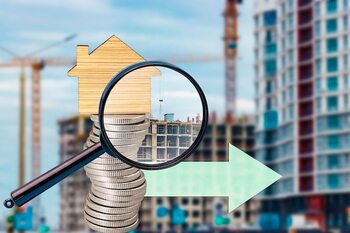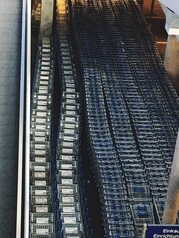The connection between community history and the value of home

The community history of a place not only enriches its culture but also significantly influences the value of the home. In Costa Rica, where traditions and coexistence are fundamental pillars, understanding this connection is key for those looking to invest in real estate or settle in a neighborhood. By exploring how the historical and social legacy of a community impacts property value, we will discover that a home is much more than a structure; it is part of a shared narrative that gives life and meaning to our surroundings.
1. The importance of local history in property valuation
The local history of a community plays a crucial role in property valuation, as buyers often seek more than just a physical structure. When purchasing a home, people want to settle in an environment that offers them a connection to the past and a sense of belonging. The stories of towns, rooted traditions, and relevant historical events can increase the demand for properties in that area, driving prices up. In this sense, houses are not just simple buildings; they are witnesses of time and bearers of memories that enrich everyday life.
Additionally, local history can be a decisive factor for many buyers when considering the safety and overall well-being of a community. Neighborhoods with a rich cultural heritage often attract residents interested in preserving those traditions and contributing to their legacy. This creates a collaborative environment where neighbors actively engage in the maintenance and improvement of shared space. Thus, properties located in areas with a strong historical sense tend to maintain their value over time, becoming safer investments for those looking to settle down for the long term.
2. How cultural traditions strengthen the sense of belonging
Cultural traditions act as a common thread that unites people within a community, creating a sense of belonging that transcends generations. In Costa Rica, for example, festivities like the patriotic celebrations or the celebration of the Day of Our Lady of the Angels not only bring residents together around common activities but also reinforce collective identity. Such events allow both new residents and long-time inhabitants to feel part of a shared history, which in turn creates a welcoming environment conducive to the development of strong interpersonal relationships. By feeling this emotional connection to their cultural roots, residents tend to value their home and neighborhood more, thus raising the perceived value of properties in the area.
Cultural traditions also contribute to the maintenance and care of the physical environment. When members of a community are committed to their local customs and celebrations, they are more likely to engage in initiatives to preserve public spaces and improve infrastructure. For example, community projects aimed at beautifying squares or parks are often motivated by the desire to keep alive those traditions that are so meaningful to them. This not only enhances the quality of the residential area but also attracts future buyers interested in settling in places with a strong sense of community. Thus, cultural heritage becomes a valuable asset for those looking to invest in real estate, as it encourages a collaborative and enriching lifestyle.
3. The impact of historical events on neighborhood perception
Historical events that have shaped the life of a community often leave indelible marks on the neighborhood's perception. For example, a locality that has witnessed significant social or cultural movements can develop a much stronger sense of identity and belonging among its inhabitants. This not only strengthens community ties but also attracts new residents who seek to be part of that living history. When valuing a home in this context, it is recognized that its location is not merely geographical, but filled with meanings and collective experiences that enhance the quality of life.
Moreover, the impact of historical events on neighborhood perception can directly translate into the economic value of properties. Areas where cultural celebrations, festivals, or artistic manifestations have taken place tend to be more valued for their heritage richness. The demand to live in places with a strong historical legacy often increases, which raises real estate market prices. In this sense, understanding how these events shape both the present and the future of a neighborhood is essential for those seeking secure investments with potential growth in their family wealth.
4. United communities: the effect of collaborative work at home
Collaborative work within a community strengthens social ties and fosters an environment of mutual support that, in turn, enhances the value of the home. When neighbors come together to carry out community projects, from organizing cultural events to creating shared spaces like parks or urban gardens, a sense of belonging is generated that elevates the quality of life in the neighborhood. This type of cohesion not only benefits those living in the area by creating a safer and more pleasant environment, but it also attracts new residents and investors interested in becoming part of a vibrant and active community.
Moreover, collaborative work can translate into initiatives that preserve and celebrate local history, which is crucial for keeping cultural identity alive. Shared traditions create collective experiences that enrich not only daily coexistence but also the emotional value associated with each home. Investing in a property located in a community where this collaboration is encouraged can result in sustained increases in real estate value, as the distinctive characteristics of these areas tend to be highly desirable for future generations. Thus, each joint project contributes to building a legacy that transcends the physical space and becomes an integral part of the social fabric.
5. Testimonials: personal stories that elevate the emotional value of a neighborhood
The personal stories of the neighbors are the thread that weaves the rich fabric of a community. Each tale, whether about how two families met at the patron saint festivities or the local entrepreneur who has sustained their business for generations, adds layers of meaning and emotional connection to a neighborhood. These shared experiences not only build the collective identity of the place but also foster a sense of belonging among those who live there. When potential buyers consider where to settle down, these stories can be decisive; a neighborhood with echoes of unity and tradition is more likely to attract those seeking not just a house but a home where they can create their own memories.
Furthermore, testimonials about lived experiences in the community highlight unique characteristics that are often not reflected in real estate statistics. For example, stories about how neighbors support each other in difficult times or how they come together to celebrate local festivities create a welcoming and supportive environment. This emotional value is essential when evaluating the cost and benefit of a property: a house surrounded by history and camaraderie tends to maintain its value and even increase it over time. Thus, personal stories are not just anecdotes; they are testimonies that elevate the perception of the neighborhood and make it a desirable place to live and invest.
6. The influence of architectural heritage on real estate prices
The architectural heritage of a community acts as a powerful attraction for potential buyers, as it not only beautifies the environment but also symbolizes the identity and history of the area. Iconic buildings, historic squares, and unique architectural styles can elevate interest in the real estate market, generating a sense of belonging among residents and attracting those seeking not just a home, but a connection to the past. By preserving these heritage elements, communities strengthen their distinctive character and increase their value in the real estate sector.
Moreover, the influence of architectural heritage translates into a positive effect on property prices. Areas with well-preserved historic structures often experience higher demand, which can result in a sustained increase in home values. This is because many buyers are willing to pay more to live in places where history is present and where they can enjoy a vibrant cultural environment. Thus, by investing in properties located in areas rich in architectural heritage, owners not only secure a home with meaning but also make a smart bet on the future appreciation of their investment.
7. Community activities as a driver of sustainable urban development
Community activities play a crucial role in sustainable urban development, as they foster social cohesion and promote a sense of belonging among residents. In communities like those in Costa Rica, where the social fabric is strong, these initiatives can range from local fairs to cleaning and beautification projects in the neighborhood. By actively participating in these events, residents not only contribute to improving their immediate environment but also create lasting bonds with their neighbors. This constant interaction strengthens community identity and, in turn, makes the area more attractive to potential buyers looking for a home in a vibrant and connected place.
Furthermore, community activities can be drivers of local economic development. By organizing producer markets or cultural festivals, business opportunities are created for local entrepreneurs and the neighborhood's economy is boosted. These dynamics not only enrich the cultural offering of the place but also elevate the value of the home by making the area perceived as an active and desirable space to live. As more people are attracted by the vitality and tangible benefits of a community committed to its sustainable development, properties within that area tend to experience an appreciation in value. Thus, it is clear that collective commitment to community activities can transform not only the urban landscape but also the aspirations and opportunities of those who live there.
8. Strategies to preserve community history and increase value
The preservation of community history can be achieved through various strategies that encourage active participation from residents and promote the cultural value of the neighborhood. An effective option is to organize cultural events and festivals that celebrate local traditions, such as craft fairs or art exhibitions. These activities not only allow residents to share their legacy but also attract visitors, generating additional interest in the area. By creating an environment where the community feels proud of its history, the sense of belonging and connection is strengthened, which can result in an increase in home values as more people wish to be part of that narrative.
Additionally, it is essential to document and communicate the local history through initiatives such as the creation of community archives or guided historical tours. Involving schools and universities in research projects about local heritage can foster a deeper appreciation among new generations. By highlighting significant backgrounds and emblematic figures of the area, a strong identity is created that not only attracts future buyers interested in investing in historically charactered properties but also elevates the overall perception of the place as a valuable and inspiring environment. Ultimately, these actions contribute to consolidating a vibrant community where each home tells an important part of its shared history.
9. The connection between citizen security and social cohesion in historic neighborhoods
Citizen security and social cohesion in historic neighborhoods are intrinsically linked. In communities where there is a rich shared history, neighbors tend to develop stronger bonds with each other, fostering a sense of belonging and collective responsibility. This emotional connection not only improves quality of life but also contributes to the perception of safety in the neighborhood. When residents know and trust each other, they are more likely to actively engage in monitoring the environment, thus creating a safer space for everyone. Social cohesion acts as a protective shield against minor crimes, turning the neighborhood into a place where people feel comfortable and secure.
Moreover, this synergy between security and cohesion has a direct impact on home value. Property buyers often seek neighborhoods where there is an active and supportive community, as this not only fosters a harmonious living environment but also ensures a solid long-term investment. Historic neighborhoods with well-rooted traditions and a strong community identity tend to maintain their appeal even in the face of fluctuations in the real estate market. Thus, by recognizing the importance of strengthening social relationships within these spaces, not only is citizen security promoted, but also the sustainable growth of the property value of homes located there.



